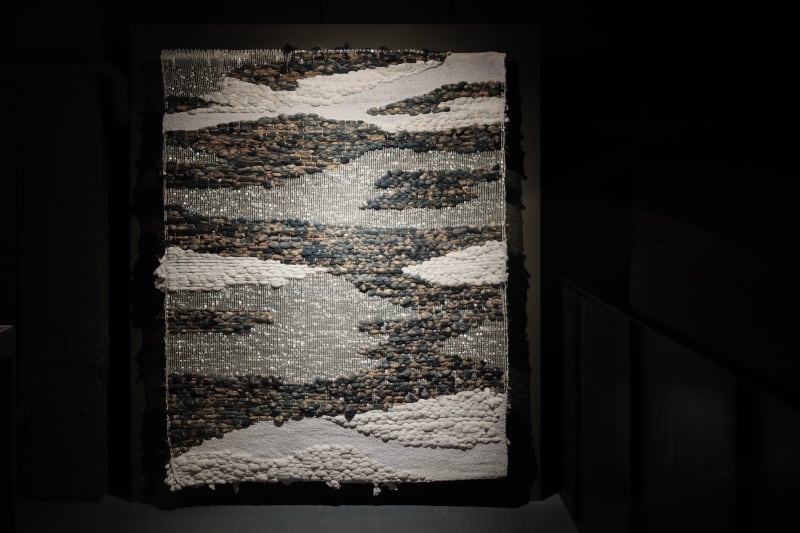Inspired by how discarded fishing nets wreak havoc on ocean ecologies with each strand of ghostly nets entangling and strangling Mother Nature, Vinyaratn is determined to weave a utopian vision by exploring and incorporating the unwanted such as scraps of waste fabrics and dead-stock yarns, sea waste, as well as non-traditional elements—including hand-spun paper documents and used stockings—to construct the vibrant, intricate conglomerate.
As a contemporary weaver, Ploenchan Vinyaratn redefines the process and materials of tapestry by utilising new materials and forms. Her artistic practice arises from her environmental consciousness within this contemporary world, nurtured with the intensive weaving training in Europe It is often characterised by her jungle of concepts, fostered with her thorough research on traditional Thai textiles and patterns. However, her practice is not about merely creating objects, but the life revolving around the making. To her, the ‘weaving in making’ is where the conscientiousness, curiosity, and honesty prevails.
The Sea Ghost and Beyond reflects her scrutiny on materiality and its extremity in art. The exhibited obscure objects unyieldingly display her ambitions in expanding the materiality in objectivity. The sculptural work in the centre of the space, The Sea Ghost, evinces the past and future with an a beautifully monstrous embodiment of a time machine. Despite colonization ceasing in many parts of the world, The Sea Ghost showcases “the struggle to preserve the indigenous forms of heterogeneity still lives itself into out of western cotemporary.”
Textiles is long-considered a significant cultural tradition in Thailand. Weaving, too, is one of the most important categories to present Thai heritage and local wisdom. In contrast to tapestry in Europe, regarded as historical visual documentations, weaving in Southeast Asia has continuously embedded Thai culture and everyday lives. It is unimaginable to discuss Thai Contemporary Art in the absence of weaving.
Therefore, through this exhibition, Nova Contemporary presents a conceptual space to discuss the thoughts on the existing boundaries between art and craft, as well as the possible reflections on Marcel Duchamp’s attempt to recast the idea of labour and visual product and Michel Foucault’s thoughts on heterogeneity.
As Annie Albers said, “Besides surface qualities, such as rough and smooth, dull and shiny, hard and soft, textiles also include colour, and, as the dominating element, texture, which is the result of the construction of weaves. Like any craft it may end in producing useful objects, or it may rise to the level of art.”

